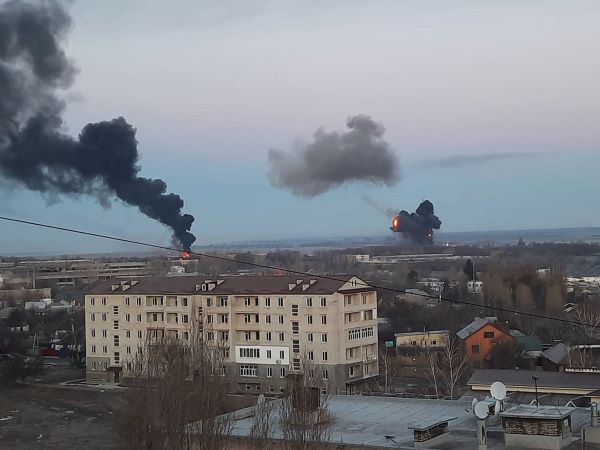
R Krishna Das
Once the third-largest nuclear power in the world, Ukraine is now battling to safeguard its sovereignty, independence, and territorial integrity. And it happened only because it largely depended on the U.S. and NATO instead of strengthening its own security apparatus.
With the arsenal of roughly 5,000 nuclear weapons, including intercontinental ballistic missiles (ICBMs) of the Soviet SS-18 class outfitted with 10 very powerful nuclear warheads, Ukraine would have been in a position to give a befitting response to the Russian invasion had it prepared a strong mechanism of self-defence and self-reliance. Instead, it has rested on the West that played the crucial role to denuclearize Ukraine completely.
As one follows the latest twists and turns on the developments unfolding in Ukraine, it is helpful to add a little context on how a nuclear arsenal fits into the picture. In the early 1990s after the collapse of the Soviet Union, Ukraine suddenly found itself independent and the third-largest nuclear power in the world. Thousands of nuclear arms had been stationed on its soil by Moscow, and they were still there.
In the years that followed, Ukraine made the decision under the influence of the West to denuclearize completely. In exchange, it would get a security guarantee from the U.S., the U.K. and Russia, known as the Budapest Memorandum.
Ukraine eventually agreed to turn all their weapons over to Russia in exchange for security guarantees, which Ukrainian officials said must be “ironclad,” from Russia, the United States and Great Britain. Ukraine looked upon the two Western states, particularly the United States, to ensure these guarantees were fully observed and remained indefinitely so. The removal of this arsenal was hailed as a victory for arms control and Ukrainians were called model world citizens.
But the fact remains that the decision has a chaotic upheaval full of discord, infighting and fears that Russia one day will take advantage of Ukraine’s non-nuclear status and attack Ukraine. The fear has come true!
The North Atlantic Treaty Organization (NATO), which has become the focal point of Russia’s war on Ukraine, has announced a military response. However, U.S. President Joe Biden is responding with words of condemnation, economic sanctions and efforts to rally U.S. allies to stand up to Moscow. But one option Biden remains unwilling to use is sending American troops to fight Russian forces in Ukraine. Biden is so dead set on avoiding the possibility of a U.S.-Russian military encounter that he has recently pulled its troops from Ukraine that have been training the country’s fighters.
By the time NATO steps in, Ukraine would have incurred the maximum loss. The country would now realize it had committed the blunder of outsourcing its own security to anyone else.
India’s decision to nuclearize proves to be wise!



